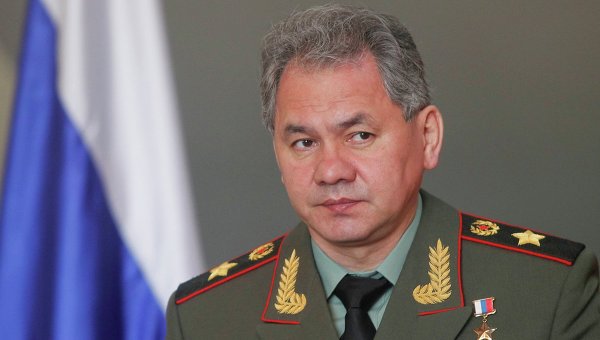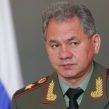
Ded Moroz, Sergei Shoigu and the ‘Magic’ of the Russian Media (Part Two)
Publication: Eurasia Daily Monitor Volume: 11 Issue: 17
By:

A Duma roundtable in November 2013 on the leadership of Russia’s Armed Forces since the dismissal of Anatoly Serdyukov as defense minister in November 2012 offered broad support for his replacement (see Part One, EDM, January 21). While supportive of the current minister of defense, Sergei Shoigu, Lieutenant-General (retired) Anatoliy Surtsukov, chief of the Army Aviation Directorate (2003–2005), was skeptical about new equipment reaching the Armed Forces. Surtsukov said, “We say: new equipment has reached the troops. But you must remember that this is Soviet equipment. There is no impetus toward the future. And our potential ‘partner’ already has mockups and flying models that have carried out dozens of flight tests with enormous prospects for the future,” adding “We will again be obliged either to try to catch a rapidly departing train or else we will not even see the signals as this train disappears over the horizon. In the context of the equipment of the future, we will play the part of natives with spears” (Voyenno Promyshlennyy Kuryer, December 18, 2013).
Lieutenant-General (retired) Vladimir Ostankov, a member of the Academy of Military Sciences, compared the development of the Armed Forces with the various capabilities of the country’s “potential enemies.” The Russian military must be capable, in Ostankov’s view, of prosecuting “any type of conflict.” But in order to reach this high standard and properly modernize the Armed Forces, it is necessary to conduct modernization over several decades; this may take up to 30 years (Voyenno Promyshlennyy Kuryer, December 18, 2013).
Ostankov, nonetheless, still sees a problem with planning in the defense ministry: “However, I see no systemic approach to the organizational development of our Armed Forces. The General Staff should not be building the Armed Forces but planning and organizing their functional components. That is to say, the missile and space defense system is a task not at the level of a branch of service or a combat arm but of the General Staff and maybe even the government.” The de facto criticism of the Shoigu leadership is that the General Staff has come under additional scrutiny and pressure. “The commanders of combat arms and branches of service should be concerned with formations and units, should decide whether to have brigades or divisions. They know best what equipment is needed and in what organizational formation it should be used, what should be the numerical strength of divisions, brigades and so forth. Imposing this from above is totally wrong,” Ostankov observes (Voyenno Promyshlennyy Kuryer, December 18, 2013).
Ostankov believes that an overall plan for the development of the Armed Forces remains lacking. He complains that efforts to build the Armed Forces in an unsystematic manner will not yield success. “You cannot build the Armed Forces unsystematically, carrying out various reforms in this or that component. It is essential to see what changes this will entail in the other components,” Ostankov asserts (Voyenno Promyshlennyy Kuryer, December 18, 2013).
Although the November 2013 roundtable offered generally positive interpretations of Shoigu and the challenges facing the defense ministry, a number of indirect criticisms are worth noting. There is skepticism about the existing modernization capacity within the defense industry to meet the targets set for 2020; planning remains reactive and there seems to be no joined-up or overarching approach to the changes made under Shoigu. Some veterans even question whether there might be a shortfall in officer numbers by 2017. Unless there are changes to the number of military facilities and institutes or recruitment methods, it will be difficult to “ensure an output of 50,000 to 60,000 students per year” (Voyenno Promyshlennyy Kuryer, December 18, 2013). There are also similar concerns about the recruitment of contract soldiers, including their pay and conditions and making more attractive their conditions of service.
Despite Shoigu’s popularity as Defense Minister a number of immediate challenges will test his ability to “guide” the ministry in troubled times. These include, according to a commentary in Nezavisimoye Voyennoye Obozreniye, consolidating the newly formed “Situation Center” of the General Staff, continuing to build the necessary military infrastructure to support Russian interests in the Arctic, ensuring the security of the Sochi Winter Olympics, staging more “snap inspection” exercises, holding the Vostok 2014 military exercise, preparing infrastructure to receive new arms and equipment scheduled to arrive in 2014–2015, or intensifying the work of releasing military property (Nezavisimoye Voyennoye Obozreniye, January 17).
Beyond these challenges, of course, there lurk some of the longer-term issues noted by veterans during their November 2013 roundtable. But, overall, Shoigu has emerged after his first year as defense minister sustaining his position as a highly popular politician. This is unsurprising given his assured role in Putin’s political firmament. His greatest success, therefore, is the extent to which he has appeased the military old guard and, if not silenced the critics of the defense ministry, certainly reduced their appetite for blood (Nezavisimoye Voyennoye Obozreniye, January 17).
Consequently, a populist belief, albeit carefully crafted in the Russian media over many years, that portrays Shoigu as a reliable fixer buys time for a defense ministry that faces numerous uncertainties (https://redstar.ru/index.php/component/k2/item/13774-gosoboronzakaz-strategiya-i-taktika). Equally, Shoigu has advanced belief in the capacity of the domestic defense industry to manufacture advanced high-technology weapons and equipment, without accessing the Western arms market. Recent reports highlight naval modernization, for example, as an important yet arduous part of this process.
Yet, to maintain his credentials as a fixer par excellence, Shoigu needs to finely balance his moves to please the old guard with progress toward a modernized Russian military. To do this, he must retain his standing in team Putin and use the Russian media to perpetuate his “magical,” near–Ded Moroz (Father Frost) status (see EDM, January 21), all while avoiding the pitfalls of previous defense ministers. It is precisely Shoigu’s appeal to the old guard that indicates the extent to which the defense ministry currently straddles a curious mixture of reform-crippling nostalgia with its claims to direct efforts toward the construction of truly modern and combat-capable Armed Forces.




